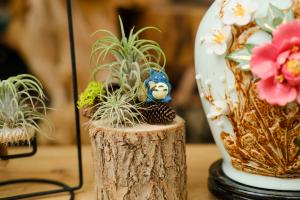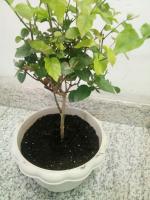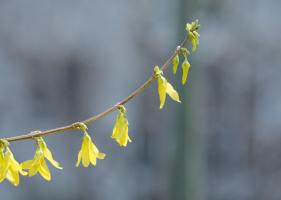Introduction
Ginkgo trees are often considered living fossils due to their longevity and unique place in evolutionary history. These trees are known for their fan-shaped leaves and ability to withstand harsh urban environments. However, one question that arises about ginkgo trees is whether they are flowering plants or not. In this article, we will explore the classification and reproductive system of ginkgo trees to answer this question.
Ginkgo Classification
Ginkgo trees are the only living representative of the Ginkgoales order, which dates back more than 270 million years. They are gymnosperms, which means they produce seeds that are not enclosed in a fruit. Unlike angiosperms, the most common type of flowering plants, ginkgo trees do not have flowers. Instead, they reproduce through the production of naked seeds, known as ovules, that are housed on the surface of the female trees' leaves.
Ginkgo Reproductive System
Ginkgo trees are dioecious, meaning that individual trees have either male or female reproductive organs. Male trees produce pollen cones that release pollen into the air, which is then carried by the wind to the female trees. Female trees produce ovules on their leaves, which are fertilized by the pollen to produce seeds. Although the reproductive system of ginkgo trees is not as showy as that of flowering plants, they have evolved to be effective at reproduction in their natural habitat.
Ginkgo and Flowers
Although ginkgo trees do not have flowers, they still have a role to play in the world of flowering plants. Ginkgo trees are thought to have been pollinated by insects during their evolutionary history, which is why they produce a yellow, foul-smelling fruit-like structure. This structure contains seeds that have survived millions of years without significant modification. Furthermore, the genes that control the production of this structure in ginkgo trees are similar to those that regulate fruit development in flowering plants. Therefore, ginkgo trees may have shared ancestral links with flowering plants.
Ginkgo in Modern Times
Despite the lack of flowers, ginkgo trees have been cultivated for centuries for their ornamental and medicinal uses. Ginkgo leaves and extracts are commonly used in traditional Chinese medicine to treat a variety of ailments, including memory loss and dementia. Ginkgo trees are also popular as urban trees due to their resilience in polluted city environments. Finally, the ginkgo tree's unique place in the evolutionary tree of life has made it a fascinating subject of study in the fields of botany and evolutionary biology.
Conclusion
In summary, ginkgo trees are not flowering plants, but they do reproduce through the production of naked seeds. Although they lack flowers, ginkgo trees have ancestral links with flowering plants and share genes that regulate fruit development. Regardless of their unique reproductive system, ginkgo trees remain an important and fascinating species with a long evolutionary history and many uses in modern life.

 how many times do yo...
how many times do yo... how many planted tre...
how many planted tre... how many pine trees ...
how many pine trees ... how many pecan trees...
how many pecan trees... how many plants comp...
how many plants comp... how many plants can ...
how many plants can ... how many plants and ...
how many plants and ... how many pepper plan...
how many pepper plan...































